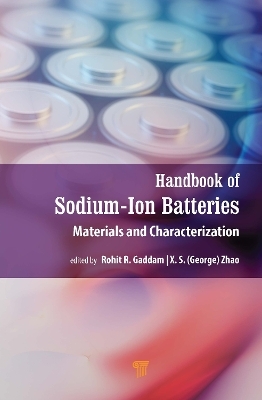
Handbook of Sodium-Ion Batteries
Jenny Stanford Publishing (Verlag)
978-981-4968-15-7 (ISBN)
The need for batteries has grown exponentially in response to the increase in global energy demand and to the ambitious goals that governments have set up for sustainable energy development worldwide, especially in developed countries. While lithium-ion batteries currently dominate the energy storage market, the limited and unevenly distributed lithium resources have caused huge concerns over the sustainability of the lithium-ion battery technology. Sodium-ion batteries have significant benefits over lithium-ion batteries, including sodium’s abundance in the Earth’s crust. These batteries have therefore gained research interest, and efforts are being made to use them in place of lithium-ion batteries.
While the past decade has witnessed significant research advances and breakthroughs in developing the sodium-ion battery technology, there still remain fundamental challenges that must be overcome to push the technology forward. This book comprises 13 chapters that discuss the fundamental challenges, electrode materials, electrolytes, separators, advanced instrumental analysis techniques, and computational methods for sodium-ion batteries from renowned scientists. The book is a unique combination of all aspects associated with sodium-ion batteries and can therefore be used as a handbook.
Rohit R. Gaddam is an assistant professor at the Department of Chemical Engineering in the Indian Institute of Science Education and Research (IISER), Bhopal, India. He completed his PhD under Prof. George Zhao at the University of Queensland (UQ), Australia, on alkali-ion batteries. He was awarded the IPRS and UQ Centennial Scholarships for his PhD. He also briefly pursued his research at Washington University in St. Louis, USA, and the CSIR-Indian Institute of Chemical Technology, Hyderabad, India. He was the recipient of the prestigious Alexander von Humboldt Fellowship to pursue his research in the field of energy storage at the Technical University of Munich, Germany. Dr Gaddam’s current research focuses on advanced functional materials synthesis for energy applications. X. S. (George) Zhao is a professor and an ARC Australian Laureate Fellow of the School of Chemical Engineering at UQ. He has also been an ARC Future Fellow (2011–2014) and a UQ Vice Chancellor’s Research and Teaching Fellow (2014–2017). Prof. Zhao’s research focuses on nanoporous materials for sustainable energy storage and conversion as well as for environmentally friendly chemical processes and products. The overall objective of his research programs is to develop tailor-designed advanced porous materials with desired structural, interfacial, and morphological properties for applications in fields ranging from energy storage and conversion, water and air purification, adsorption, heterogeneous catalysis, and seawater desalination to photonics. Prof. Zhao is a recipient of several honors and awards, including 2nd prize of the Chinese Academy of Sciences, Global Highly Cited Researcher, American Carbon Society Award, and Fellow of the Royal Society of Chemistry.
1. Challenges and Opportunities in Sodium-Ion Batteries: An Introduction 2. Principles of Battery Electrochemistry 3. Cathode Materials for Sodium-Ion Batteries 4. Prussian Blue Analogues as Cathode Materials for Sodium-Ion Batteries 5. Polymer Electrodes for Sodium-Ion Batteries 6. Transition Metal Dichalcogenides as Active Anode Materials for Sodium-Ion Batteries 7. Effect of Polymeric Binders on Sodium-Ion Storage Performance of Electrode Materials 8. Electrolytes for Sodium-Ion Batteries 9. Cycling Stability of Sodium-Ion Batteries in Analogy to Lithium-Ion Batteries 10. Atomistic Modelling and Analysis of Electrolyte Properties for Sodium-Ion Batteries 11. Separators for Sodium-Ion Batteries 12. Advanced Electron Microscopy Characterization of Sodium-Ion Battery Materials 13. Synchrotron Radiation-Based X-ray Characterizations of Sodium-Ion Battery
| Erscheinungsdatum | 12.01.2023 |
|---|---|
| Zusatzinfo | 27 Tables, black and white; 64 Line drawings, color; 147 Line drawings, black and white; 15 Halftones, color; 35 Halftones, black and white; 79 Illustrations, color; 182 Illustrations, black and white |
| Sprache | englisch |
| Maße | 152 x 229 mm |
| Gewicht | 1300 g |
| Themenwelt | Naturwissenschaften ► Biologie |
| Naturwissenschaften ► Chemie ► Physikalische Chemie | |
| Naturwissenschaften ► Chemie ► Technische Chemie | |
| Technik ► Maschinenbau | |
| ISBN-10 | 981-4968-15-3 / 9814968153 |
| ISBN-13 | 978-981-4968-15-7 / 9789814968157 |
| Zustand | Neuware |
| Informationen gemäß Produktsicherheitsverordnung (GPSR) | |
| Haben Sie eine Frage zum Produkt? |
aus dem Bereich


